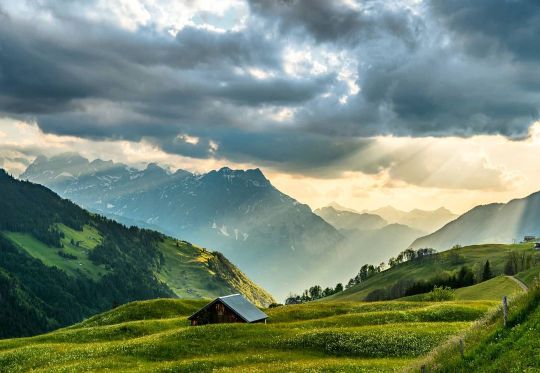#solmeta
Explore tagged Tumblr posts
Photo

F/6.3 450.0mm 1/8000s ISO-100 GPS: 47.39147, 8.552192 #switzerland🇨🇭 #myswitzerland #photographie #outdoors #swiss #incredible #landscape #landscapephoto #nature #zuerich #photooftheday #beautiful #solmeta #sun #sunset #nikon #switzerland #gps #resi #obi #amazing #D800 #zurich #visitzurich #nikondach #sswiss #🇨🇭 #schweiz #schweiz🇨🇭 (at Zürich, Switzerland) https://www.instagram.com/p/CTmPsCRsZ3e/?utm_medium=tumblr
#switzerland🇨🇭#myswitzerland#photographie#outdoors#swiss#incredible#landscape#landscapephoto#nature#zuerich#photooftheday#beautiful#solmeta#sun#sunset#nikon#switzerland#gps#resi#obi#amazing#d800#zurich#visitzurich#nikondach#sswiss#🇨🇭#schweiz#schweiz🇨🇭
2 notes
·
View notes
Text
Image geotag

#Image geotag software#
The four corners are stored using GeoTIFF or World file standards. One approach is used with the orthophotos where we store coordinates of four corners and all the other pixels can be georeferenced by interpolation. In the field of remote sensing the geotagging goal is to store coordinates of every pixel in the image. Almost any digital camera can be coupled with a stand-alone GPS and post processed with photo mapping software, to write the location information to the image's exif header. Traditional GPS tends to use more battery power. Traditional GPS does not need cell phone towers and uses standard GPS signals outside of urban areas. A-GPS can be faster getting an initial fix if within range of a cell phone tower, and may work better inside buildings. A few digital cameras also have built-on or built-in GPS that allow for automatic geotagging.
#Image geotag software#
Others may have the GPS chip and camera but do not have internal software needed to embed the GPS information within the picture. Most smart phones already use a GPS chip along with built-in cameras to allow users to automatically geotag photos. Because of the requirement for wireless service providers in United States to supply more precise location information for 911 calls by September 11, 2012, more and more cell phones have built-in GPS chips. In order to capture GPS data at the time the photograph is captured, the user must have a camera with built in GPS or a standalone GPS along with a digital camera. Two main options can be used to geotag photos: capturing GPS information at the time the photo is taken or "attaching" geocoordinates to the photograph after the picture is taken. Such techniques can be used together with geotagging to provide alternative search techniques. The related term geocoding refers to the process of taking non-coordinate-based geographical identifiers, such as a street address, and finding associated geographic coordinates (or vice versa for reverse geocoding). The geographical location data used in geotagging can, in almost every case, be derived from the global positioning system, and based on a latitude/ longitude-coordinate system that presents each location on the earth from 180° west through 180° east along the Equator and 90° north through 90° south along the prime meridian. Geotagging can tell users the location of the content of a given picture or other media or the point of view, and conversely on some media platforms show media relevant to a given location. Geotagging-enabled information services can also potentially be used to find location-based news, websites, or other resources. For instance, someone can find images taken near a given location by entering latitude and longitude coordinates into a suitable image search engine. Geotagging can help users find a wide variety of location-specific information from a device. This data usually consists of latitude and longitude coordinates, though they can also include altitude, bearing, distance, accuracy data, and place names, and perhaps a time stamp. Geotagging, or GeoTagging, is the process of adding geographical identification metadata to various media such as a geotagged photograph or video, websites, SMS messages, QR Codes or RSS feeds and is a form of geospatial metadata. Geotagger "Solmeta N2" for the Nikon D5000 DSLR

0 notes
Photo

F/9 26.0mm 1/320s ISO-100 GPS: 47.51364, 8.728343 #switzerland🇨🇭 #myswitzerland #photographie #winterthur #lovewinti #wintilove #swiss #photo #nature #visitzuerich #photooftheday #beautiful #breiti #sunshine #sunset #stadt #winterthur #nature #amazing #view #2021 #solmeta #nikon #nikond800 #d800 #nikondach #sswiss #🇨🇭 #schweiz #schweiz🇨🇭 (at Walcheweiher) https://www.instagram.com/p/CQyfr9xscpI/?utm_medium=tumblr
#switzerland🇨🇭#myswitzerland#photographie#winterthur#lovewinti#wintilove#swiss#photo#nature#visitzuerich#photooftheday#beautiful#breiti#sunshine#sunset#stadt#amazing#view#2021#solmeta#nikon#nikond800#d800#nikondach#sswiss#🇨🇭#schweiz#schweiz🇨🇭
1 note
·
View note
Text
10 Best Solmeta Gmax Review
10 Best Solmeta Gmax Review
[amazon bestseller=”solmeta gmax review” items=”10″ template=”table”]
Popular Products
This article contains affiliate links. If you make a purchase after clicking on a link I may earn a commission at no extra cost to you.
1. Why should you buy the best solmeta gmax review at Amazon
Access to the internet lets you shop at Amazon to find almost anything that you want to buy. Instead of searching…
View On WordPress
0 notes
Photo

Solmeta GMAX-GD Photo/Video GPS BDS Dual-positioning Geotagger & Bluetooth Shutter Release for Nikon D5, D810, D800, D4, D3, D700, D300S...with 4GB Flash,1900mAh Li-ion, Altimeter, eCompass, LCD...
https://huntinggearsuperstore.com/product/solmeta-gmax-gd-photovideo-gps-bds-dual-positioning-geotagger-bluetooth-shutter-release-for-nikon-d5-d810-d800-d4-d3-d700-d300s-with-4gb-flash1900mah-li-ion-altimeter-ecompass-lcd/
Embeds location, time, shooting direction into video or image EXIF for Nikon D810A, D810, D800, D800E, D4, D3-series, D700, D300S, D300, D2x, D2xs, D2Hs, D200 Dual-positioning systems: GPS and BeiDou (BDS) provide 20% more location accuracy than GPS alone, faster signal acquisition Can act as a stand-alone “Trace Logger” while sailing, hiking, flying, skiing, traveling, etc. 4GB Course Logger plus altitude & speed data, runs 18hrs without camera battery drain
0 notes
Video
The Mighty Saturn V Research on the largest and most famous rocket engine ever built began in 1953. A team of German scientists led by Dr. Wernher von Braun (1912–1977) developed the propulsion system needed to take America to the Moon from NASA's Marshall Space Flight Center in Huntsville, Alabama. Part of a three stage design, the Saturn V stood 363 feet tall on the launch pad. Comparatively, that's sixty feet taller than the Statue of Liberty, and one foot shorter than St Paul's Cathedral in London. Once assembled on the crawler, the Saturn V cleared the doors of the Vehicle Assembly Building (VAB) by only 6 feet when rolled out. Fully loaded, the rocket weighed in at 6.5 million pounds (3,000 metric tons) and contained over 3 million different parts. These five first-stage (S-1C) engines were built by Boeing. Each is 138 feet tall, 33 feet in diameter, and provided over 7.64 million pounds of thrust to get the Saturn V through the first 36 miles of ascent - enough energy to light up all of New York City for 75 minutes. They are arranged in a cross pattern; the center engine being fixed while the four outer engines could be hydraulically gimbaled to control the rocket. This Saturn V is one of the largest of the official National Historic Landmarks in the United States; it has been on display at the U.S. Space & Rocket Center since June 1969. This is the most complete of the three remaining rockets; the other two are located in the Johnson Space Center and the Kennedy Space Center.
#space#spacerocketcenter#spaceprogram#spaceandrocketcenter#solmeta#nikond300#nikon#landmark#huntsville#hsv#historic#gps#geotag#flickr#d300#commandmodule#casper#bw#apollo16#apollo#alabama#1424mm#nasa#marshall space flight center#msfc#saturn V#boeing#thrust#first stage#main engine
46 notes
·
View notes
Photo

View over Winterthur-Seen towards Winterthur from a DJI Drone F/5.6 10.26mm 1/320s ISO-100 GPS: 47.4756, 8.767387 #switzerland🇨🇭 #myswitzerland #photographie #winterthur #lovewinti #stadt_winterthur #swiss #photo #nature #visitzuerich #photooftheday #beautiful #seen #hasselblad #drone #winterthur #nature #amazing #dji #2020 #solmeta #nikon #winterthur.today #lovewinterthur #nikondach #sswiss #🇨🇭 #schweiz #schweiz🇨🇭 (at Winterthur, Switzerland) https://www.instagram.com/p/CaEuR0oAuyt/?utm_medium=tumblr
#switzerland🇨🇭#myswitzerland#photographie#winterthur#lovewinti#stadt_winterthur#swiss#photo#nature#visitzuerich#photooftheday#beautiful#seen#hasselblad#drone#amazing#dji#2020#solmeta#nikon#lovewinterthur#nikondach#sswiss#🇨🇭#schweiz#schweiz🇨🇭
0 notes
Photo

F/6.3 31.0mm 1/250s ISO-100 GPS: 47.396206, 8.723614 Altitude: 611.0m #switzerland🇨🇭 #myswitzerland #photographie #effretikon #illnau #swiss.view #swiss #photo #nature #visitzuerich #photooftheday #beautiful #tree #reflection #reflect #nature #amazing #view #2021 #solmeta #nikon #nikond800 #d800 #nikondach #sswiss #🇨🇭 #schweiz #schweiz🇨🇭 (at Illnau, Zurich, Switzerland) https://www.instagram.com/p/CSHPGpHMV0M/?utm_medium=tumblr
#switzerland🇨🇭#myswitzerland#photographie#effretikon#illnau#swiss#photo#nature#visitzuerich#photooftheday#beautiful#tree#reflection#reflect#amazing#view#2021#solmeta#nikon#nikond800#d800#nikondach#sswiss#🇨🇭#schweiz#schweiz🇨🇭
0 notes
Photo

F/4.5 70.0mm 1/400s ISO-100 GPS: 47.484093, 8.750731 Altitiude: 603.0m #switzerland🇨🇭 #myswitzerland #photographie #winterthur #lovewinti #wintilove #swiss #photo #nature #visitzuerich #photooftheday #beautiful #mattenbach #sunshine #sunset #flower #winterthur #nature #amazing #view #2021 #solmeta #nikon #nikond800 #d800 #nikondach #sswiss #🇨🇭 #schweiz #schweiz🇨🇭 (at Winterthur, Switzerland) https://www.instagram.com/p/CR551-rMkr4/?utm_medium=tumblr
#switzerland🇨🇭#myswitzerland#photographie#winterthur#lovewinti#wintilove#swiss#photo#nature#visitzuerich#photooftheday#beautiful#mattenbach#sunshine#sunset#flower#amazing#view#2021#solmeta#nikon#nikond800#d800#nikondach#sswiss#🇨🇭#schweiz#schweiz🇨🇭
0 notes
Photo

F/7.1 52.0mm 1/2500s ISO-100 GPS: 46.872257, 8.763416 #switzerland🇨🇭 #schweiz #unterschaechen #schaechental #uri #klausenpass #godreys #klausen #rays #alps #valley #riding #klausenpass #mindthemountains #honda #sun #motorcycle #cbr1000rr #natgeo #2021 #solmeta #nikon #nikond800 #d800 #nikondach #sswiss #🇨🇭 #schweiz #schweiz🇨🇭 (at Unterschächen, Switzerland) https://www.instagram.com/p/CQX972rAw7O/?utm_medium=tumblr
#switzerland🇨🇭#schweiz#unterschaechen#schaechental#uri#klausenpass#godreys#klausen#rays#alps#valley#riding#mindthemountains#honda#sun#motorcycle#cbr1000rr#natgeo#2021#solmeta#nikon#nikond800#d800#nikondach#sswiss#🇨🇭#schweiz🇨🇭
0 notes
Photo

F/4 28.0mm 1/160s ISO-640 GPS: 47.472263, 8.665103 Altitude: 600.3m #switzerland🇨🇭 #myswitzerland #photographie #winterthur #tvbruetten #wintilove #swiss #photo #nature #visitzuerich #photooftheday #beautiful #tree #reflection #sunset #lake #brütten #nature #amazing #view #2021 #solmeta #nikon #nikond800 #d800 #nikondach #sswiss #🇨🇭 #schweiz #schweiz🇨🇭 (at Brütten, Switzerland) https://www.instagram.com/p/CSCQs_CMvNm/?utm_medium=tumblr
#switzerland🇨🇭#myswitzerland#photographie#winterthur#tvbruetten#wintilove#swiss#photo#nature#visitzuerich#photooftheday#beautiful#tree#reflection#sunset#lake#brütten#amazing#view#2021#solmeta#nikon#nikond800#d800#nikondach#sswiss#🇨🇭#schweiz#schweiz🇨🇭
1 note
·
View note
Photo

Shot from Crans-Montana accross the Rhône River Valley with a Sigma 300mm Lens F/6.3 300.0mm 1/800s ISO-100 GPS: 46.326004, 7.504287 #switzerland #switzerland🇨🇭 #myswitzerland #weisshorn #swissalps #alps #wallis #valais #mountain #vallais #swiss #2021 #schweiz #peak #redpeak #moming #pennine #sswiss #dslrphotography #dslr #sigma #solmeta #nikon #nikond800 #d800 #nikondach #sswiss #🇨🇭 #schweiz #schweiz🇨🇭 (at Crans Montana, Alpes, Switzerland) https://www.instagram.com/p/CRjgpp-MyHP/?utm_medium=tumblr
#switzerland#switzerland🇨🇭#myswitzerland#weisshorn#swissalps#alps#wallis#valais#mountain#vallais#swiss#2021#schweiz#peak#redpeak#moming#pennine#sswiss#dslrphotography#dslr#sigma#solmeta#nikon#nikond800#d800#nikondach#🇨🇭#schweiz🇨🇭
0 notes
Photo

Nikon D800 1/250 sec. f/6.3 500mm GPS: 47.39944, 8.51403 #switzerland🇨🇭 #myswitzerland #photographie #weiden #lovezueri #zuerilove #swiss #photo #nature #vogelwarte #visitzuerich #photooftheday #beautiful #zueri #zuerich #stadt #milan #nature #amazing #bird #2021 #solmeta #nikon #nikond800 #d800 #nikondach #sswiss #🇨🇭 #schweiz #schweiz🇨🇭 (at Zürich, Switzerland) https://www.instagram.com/p/CQij2PeAleL/?utm_medium=tumblr
#switzerland🇨🇭#myswitzerland#photographie#weiden#lovezueri#zuerilove#swiss#photo#nature#vogelwarte#visitzuerich#photooftheday#beautiful#zueri#zuerich#stadt#milan#amazing#bird#2021#solmeta#nikon#nikond800#d800#nikondach#sswiss#🇨🇭#schweiz#schweiz🇨🇭
0 notes
Video
The Mighty Saturn V by William Franklin Research on the largest and most famous rocket engine ever built began in 1953. A team of German scientists led by Dr. Wernher von Braun (1912–1977) developed the propulsion system needed to take America to the Moon from NASA's Marshall Space Flight Center in Huntsville, Alabama. Part of a three stage design, the Saturn V stood 363 feet tall on the launch pad. Comparatively, that's sixty feet taller than the Statue of Liberty, and one foot shorter than St Paul's Cathedral in London. Once assembled on the crawler, the Saturn V cleared the doors of the Vehicle Assembly Building (VAB) by only 6 feet when rolled out. Fully loaded, the rocket weighed in at 6.5 million pounds (3,000 metric tons) and contained over 3 million different parts. These five first-stage (S-1C) engines were built by Boeing. Each is 138 feet tall, 33 feet in diameter, and provided over 7.64 million pounds of thrust to get the Saturn V through the first 36 miles of ascent - enough energy to light up all of New York City for 75 minutes. They are arranged in a cross pattern; the center engine being fixed while the four outer engines could be hydraulically gimbaled to control the rocket. This Saturn V is one of the largest of the official National Historic Landmarks in the United States; it has been on display at the U.S. Space & Rocket Center since June 1969. This is the most complete of the three remaining rockets; the other two are located in the Johnson Space Center and the Kennedy Space Center.
#space#spacerocketcenter#spaceprogram#spaceandrocketcenter#solmeta#nikond300#nikon#landmark#huntsville#hsv#historic#gps#geotag#flickr#d300#commandmodule#casper#bw#apollo16#apollo#alabama#1424mm#nasa#marshall space flight center#msfc#saturn V#boeing#thrust#first stage#main engine
97 notes
·
View notes
